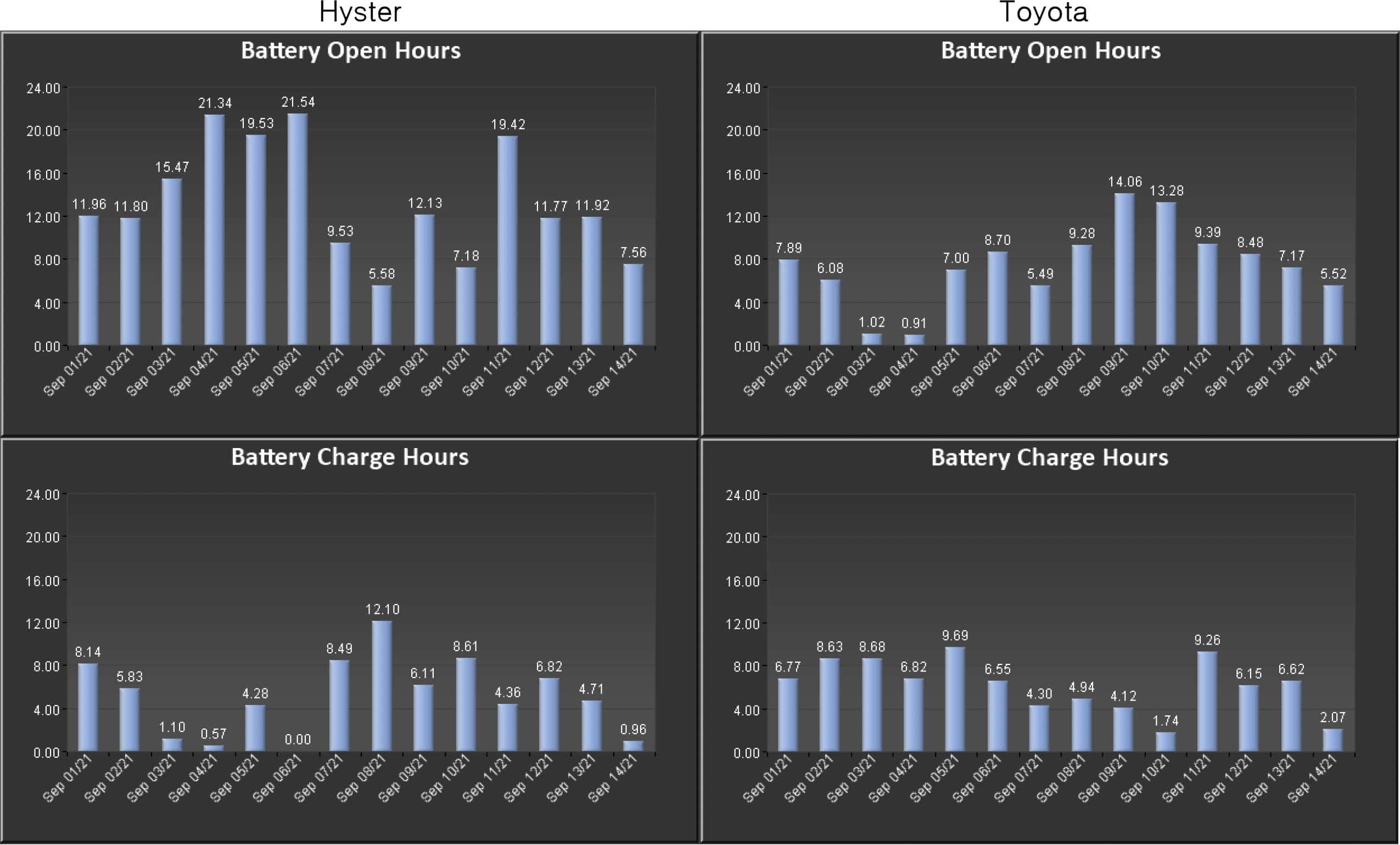Forklift power study was performed at Miller Milling location at 220 Fairmount St. Saginaw TX. 76179 to analyze battery charging and discharging patterns and its effects on life span. Study was conducted from 8/14 to 8/31.
Below are the trucks that were sampled.

Battery Equivalent Units
Conventional operation can utilize up to 80% of battery capacity and 1 daily charge. Single Shift Charger/single shift. Opportunity charge operations can utilize up to 120% of battery capacity with several daily charges, a full charge event every 24 hours and a weekly equalization. Fast charge operations can utilize up to 160% of battery capacity with several charges daily and equalization charge once a week.

Discharge Hours
Single shift application involves 6 hours of cumulative usage of equipment. Over 6 and less than 12 hours a day (2 shifts) is ideal for opportunity charge. More than 12 but less than 18 hours a day fast charge is ideal. A combination between hours runtime and BEU should determine what charging profile is applicable to successfully utilize lead acid batteries. If an application presents more than that indicated hours, it is recommended to consider rotating equipment, adding equipment or storing extra batteries to change out supplying enough power to run the fork trucks.

Open Hours & Charge Time
Idle time plus charge time is to be considered available time to recharge.

Hyster truck hours available to recharge are 16.60, while the Toyota truck has a combined 13.79 hours. Such time is enough to keep batteries at a higher voltage level achieving 100% every day at the end of the day.
Daily Plug-Ins
Graphs below show a charge pattern based on necessity to make batteries last the whole shift. Consistent connections to recharge during break and lunch should help avoid low voltage which introduces heat in battery and its premature catastrophic failure.

Daily Max Charge Levels
A full charge cycle daily must happen to promote healthy battery life. Below graphs show percentage of daily voltage levels.

Daily Discharge Voltage
Low charge levels shown below.

Areas of Improvement:
- Charging
Data shows some higher plug-in events but a cumulative hour low number. Daily charge time must be higher than discharge. Any deficits will start deteriorating the batteries internally causing premature catastrophic failure. - Watering
Ideal time to add water to lead acid batteries is after a full charge cycle and preferably equalization. Given the charge deficits and consequently low voltages, acid spills may be a problem. Any watering to a discharged battery (at any level) will result in a boil over al acid loss. - Low Voltage
Lack of consistent charging will keep batteries at a low voltage. Effects of this will transfer to the truck components as elevated temperatures will cause failures. Same is the case inside of the battery. High temperatures will diminish battery lift. - Charger to Battery Ratio
Each battery must have its own charger to control weekly equalization charges are not missed including daily charges. Typically, most utilized trucks will get charged more than the rest causing both groups to fail due to heat or sulfation accordingly.